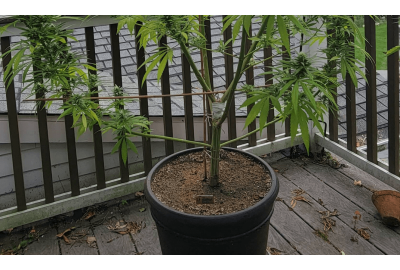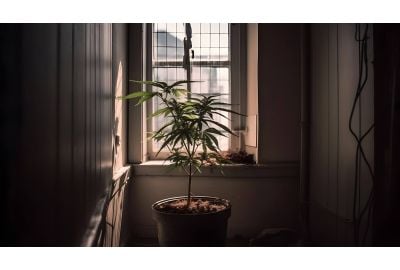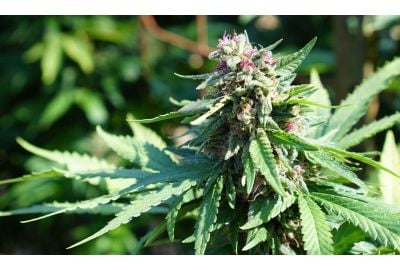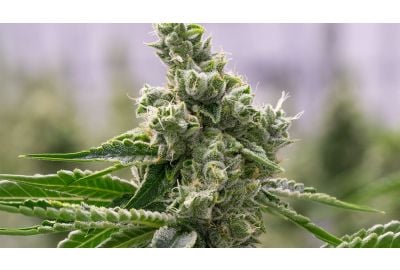SOG vs SCROG with Kyle Kushman
SOG vs SCROG is a common dilemma for growers. In the end, both SCROG and SOG are fantastic ways to increase your yields without compromising the quality of your bud.
As your level of expertise grows, these are exactly the sort of techniques you should be practicing. Although most people consider SCROG to be the more difficult of the two, they’re relatively easy techniques to master and you should definitely try them both.
We have outlined how to set up and execute both techniques in the following articles:
This article will take a look at the main differences between the two growing techniques, helping you to decide which is best suited to your cannabis growing needs - SOG vs SCROG. However, Kronic is here to break down the benefits and drawbacks of Sea of Green (SOG) and Screen of Green (SCROG) first, before comparing and contrasting Low-Stress Training (LST) with it's more rigorous counterpart, High-Stress Training (HST).
1. SOG vs SCROG: Sativa for SCROG, Indica for SOG
Sativa plants are famously tall and leggy, making them more difficult to manage indoors, especially with limited vertical space. This makes them more adaptable to the SCROG, however, as the longer limbs push their way outwards through the screen.
More branches means more bud sites exposed to the light above the screen. We would suggest a strain like Jack Herer or Amnesia for a SCROG, they both have the attributes for success.
Indica plants, on the other hand, are generally shorter and bushier. They are well-known for having a large, central cola rather than multiple, smaller branches, and perform well in a SOG with little maintenance. Try Northern Lights or White Widow - classic cannabis strains and perfect for the job.
If you prefer growing autos, a SOG is unquestionably the better choice. They are generally fast and uniform and rarely grow too tall for a sea of green. They're usually too fast for a ScrOG - visit our autoflower ScrOG guide to learn more.
2. Do SOGs require more plants?
When growing with a SCROG, you can produce great yields with only a single plant, even more with two to four plants at a time. SOGs take advantage of the space in a different way, bunching up to 25 plants under a single light. With this in mind, your SOG will require a higher outlay on seeds and won’t help those in states with limits on plant numbers.
If you’re growing recreationally in California (limited to 6 plants) you would be better off with a SCROG. If you’re growing cannabis in California with a medical card, the 24 plant limit should push you towards a SOG.
3. SOG and SCROG are great with cannabis seeds
Compared to clones, plants grown from seeds tend to be healthier and more high-yielding (and you will generally have a far bigger range to choose from). So unless you simply do not have the time to pop the seeds and let them grow a week or two, they should always be selected over clones.
Cannabis seeds are perfect for Scrogging. You will have lots of time to train the plant to grow horizontally, and the taproot (clones don’t have taproots) will, initially at least, give the plant a much stronger root ball.
This is important to consider as a SCROG puts a lot of demand on a single plant. The better the root system, the better your overall results.
Seeds are great for a SOG for similar reasons. Yes, the root ball is important, but it’s also VITAL to keep a SOG grow free of disease, pests and infestations. Clones are notorious for harboring pests and pathogens.
It doesn’t matter how clean your space is, if your clones have issues, your entire grow will have issues, and those issues will spread far more quickly in a SOG.
What if your seeds produce plants of different sizes? It’s true that seeds can produce phenotypes with different heights, making it trickier to keep the canopy uniform. But the variations tend to be manageable and will give you a good opportunity to train your plants and use any extra height to your advantage.
In the (highly) unlikely event you end up with a runt, simply remove it from your SOG and bunch the remaining plants tighter together.
4. Maintenance: are SOGs more work than SCROGs?
Most growers agree that SOGs require more effort with regards to maintenance. This is down to the time taken to monitor and regularly adjust the temperature and humidity of the growing space.
You’ll have a lot of plants huddled together and they will need to be ventilated, pruned and regularly checked for pests and pathogens. You’ll have a lot of plants to maintain and you’ll need to be accurate with your feeding and watering.
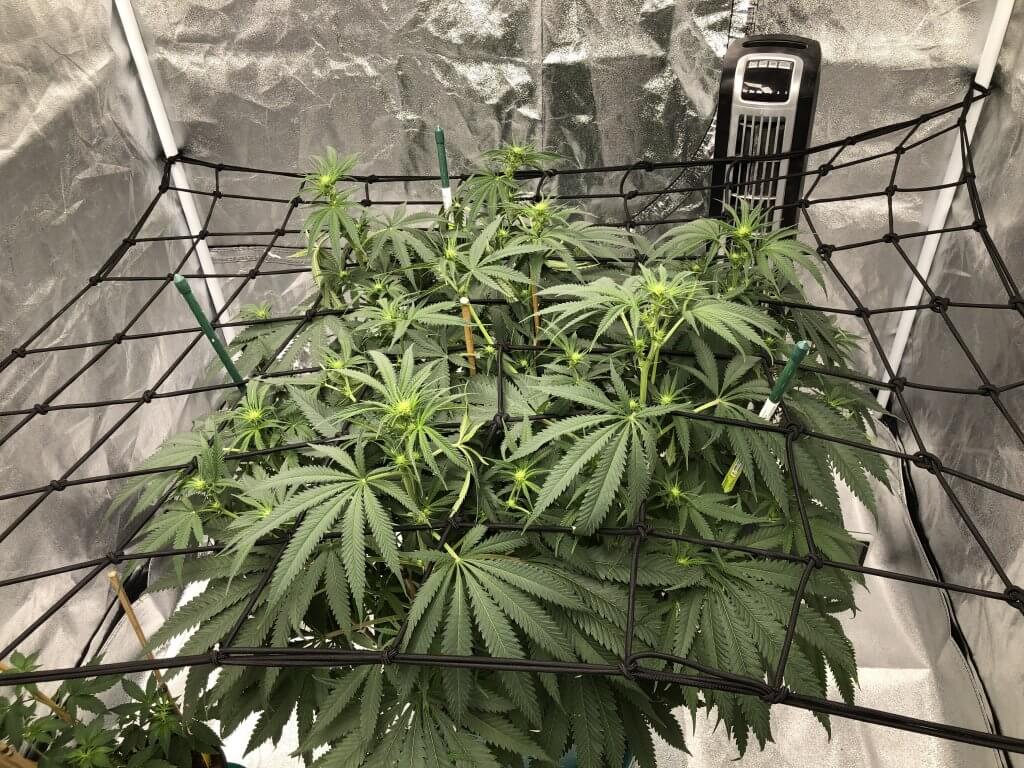
Scrogging utilizes fewer plants and so there is less work keeping them (or it) healthy. It can be tricky to feed the plant through the trellis correctly, though, and easy to damage your plant if you’re not careful. But with a light touch and a little vigilance, a SCROG will deliver high yields with less light, water and effort than a SOG.
5. SCROG vs SOG: which is best?
There is no definitive answer to this question as every grower has different requirements and different levels of skill and experience. If you’re a medical grower able to grow 24 plants at a time, and you need lots of medicine FAST, go for a SOG.
It’s a quick, efficient way to really boost yields. But if it’s your first grow you need to think twice about the SOG. Problems spread quickly in close-knit plants and you might not have the experience to spot them in time.
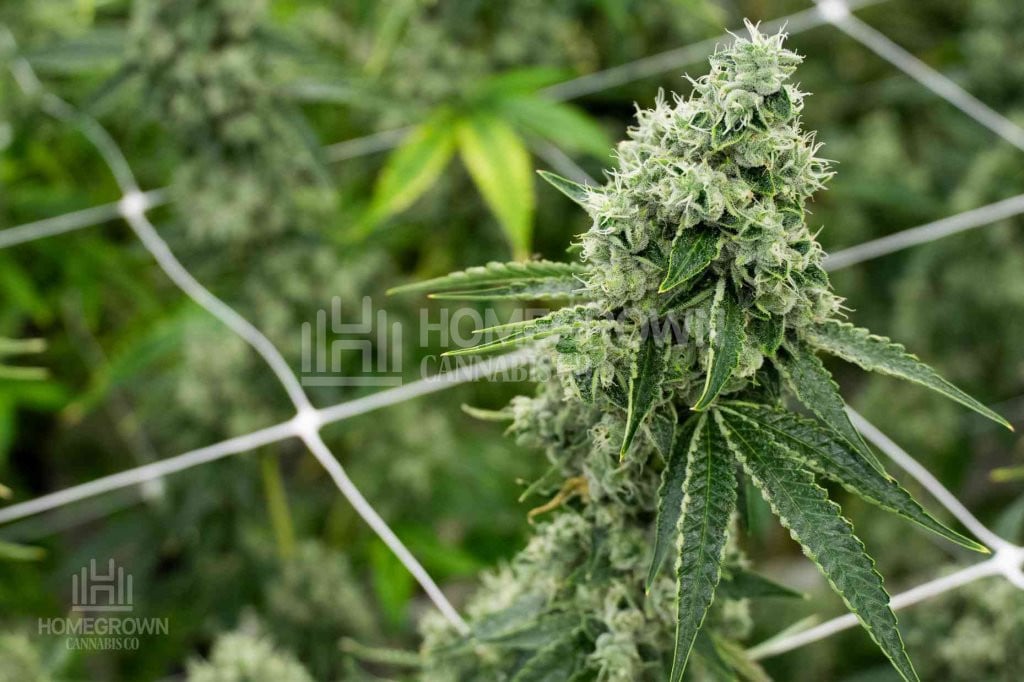
Scrogging is ideal for those limited, by law or circumstance, to just a few plants. Beginners should be able to tease a great harvest from just a couple of cannabis plants, meaning your seed spend is lower and your rewards far greater.
Whichever technique you would like to master - SOG or SCROG -, do not hesitate to get in touch to find out more. We are here to help and we love feedback (good or bad). Join Homegrown Forum and start sharing your thoughts and experiences!
About the Author: Kyle Kushman
Kyle Kushman is a legend in the cannabis community. He is the modern-day polymath of pot: cultivator, breeder, activist, writer, and educator. After winning no less than 13 Cannabis Cups, there’s nothing this guy doesn’t know about indoor growing - he’s been there, done it, and is still doing it to this day!
